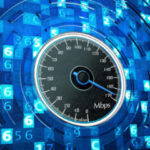
Hundreds of computer screens light the expo floor as top technology professionals from around the world, dressed in gray and black suits, scan QR codes inside each booth, gathering specific information they need without picking up any paperwork. Other people exchange contact information through RFID badges, without ever taking out a business card.
When Dell first launched Dell World, its annual global conference for industry leaders and technology professionals, in 2011, the company immediately began experimenting with interactive technology. “Each time we’ve used the technology a little differently,” said Liz Lathan, Dell’s director of event marketing. “The purpose is for attendees to interact with each other and interact with the material.”
Near-field communication, RFID (radio-frequency identification), QR codes — all of these fall under the umbrella of interactive technology, and are the subject of “What’s New in Near-Field Communication, Smart Badges, and ARS,” this month’s video in The Intersection Series: Where Technology Meets Inspiration, presented by PCMA and PSAV Presentation Services. While the need for specific hardware, such as RFID-reading gates, at one time placed limitation on these sorts of systems, today “some of the devices that people are carrying, like their mobile phones, are allowing for that infrastructure not to be as necessary,” said Brian Lagestee, PSAV’s senior vice president of revenue management, who is interviewed in the Intersection video. “Now those types of technologies can be used in conjunction with your mobile app. So the future is very exciting as to where these technologies can go and what they can do for the events industry.”
With a room full of touch screens, Dell World is a prime location for interactive technology. At the 2011 conference, held at the Austin Convention Center, Dell used QR codes to disseminate information quickly and conveniently at booths. “People could scan a code at each booth, and then we’d send one email to them at the end with a catalog of everything they’d scanned,” Lathan said. “They could get white papers, case studies, and any other materials that they’d get at the booths.”
These methods are not only environmentally friendly, efficient, and fun, they’re engaging. “When you’re on site at an event and you want an attendee to do something or experience something or get content,” Lagestee said, “these interactive technologies can trigger the interaction with attendees. It’s about having those trigger points for attendees.”
Now RFID technology can help attendees do everything from access public transportation to pay for sessions and refreshments. But two major goals remain, according to Lagestee: sharing specific content that you wouldn’t send out in an email blast, and better understanding what attendees are doing, to help manage overall pacing and costs.
“I think you have to start with the objective,” Lathan said. “Things like RFID [technology] are not cheap, but if you know what you want to get out of it, you know what level of investment to make.” It’s important to outline your needs and goals in your RFP, Lagestee said, and then have different technology providers offer solutions. He added: “Start with your vision.”


